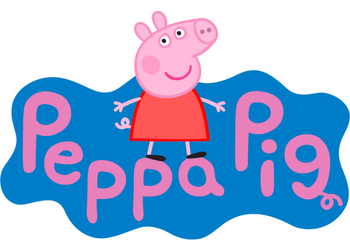Wheat allergies are triggered by eating foods with wheat, barley, or rye. Or, sometimes, by inhaling wheat flour. Even though true wheat allergies in babies are rare, they're scary. After all, wheat is a popular ingredient. Think foods like:
- Bread
- Breaded meat and fish
- Cereal
- Crackers
- Ice cream
- Pastries
- Pizza
- And more
If you’re a parent or caretaker who’s concerned your child has a wheat allergy, it’s ok. There are plenty of treatment options available and chances are they’ll grow out of it as they age.
Yet, conditions like celiac disease and gluten intolerance don’t go away with age. And they’re much more common in babies, children, and adults.
It’s important to know the difference between each one so you can best manage your child's symptoms. Let’s explore wheat, gluten, and allergies to learn more.
Here’s what this guide covers:
- Wheat allergy symptoms and signs in babies
- Wheat allergy vs. celiac disease vs. gluten intolerance
- When to call 911 for a wheat allergy
- Top foods to avoid if your baby is allergic to wheat
- How to prevent and treat baby wheat allergies
- How to diagnose wheat allergies in babies
- FAQ: Everything you need to know about baby wheat allergies
Wheat Allergy Symptoms and Signs in Babies
Baby wheat allergies are an immune response. It’s your baby’s body’s way of protecting itself from what it thinks is an “invader." Or something bad that's not supposed to be there.
So your baby's body reacts and sends out antibodies, or little soldiers who fight on their behalf. They venture out on a mission to attack the invader (in this case, it’s wheat). And when those antibodies start fighting off wheat, physical symptoms start showing up.
You’ll notice signs and symptoms within a few minutes or hours after ingestion. Here’s what parents and caregivers can look out for:
Mild wheat allergy
- Runny nose
- Congestion, coughing, or sneezing
- Itchy or red skin
- Nausea
Moderate wheat allergy
- Hives, rashes, or raised red bumps on the skin
- Swollen and/or itchy lips or mouth
- Vomiting
- Diarrhea
Severe wheat allergy
- Shortness of breath
- Wheezing
- Difficulty swallowing
- Anaphylaxis (rare)
Wheat Allergy vs. Celiac Disease vs. Gluten Intolerance
Wheat allergies often get mixed up with the celiac disease and gluten intolerance. And even though they’re similar, they aren’t identical. Here’s a breakdown of each so you can get to know the difference:
Wheat Allergy
- Rare type of allergy
- Immune system response
- Caused by a release of histamine
- Triggered by ingesting wheat, barley, or rye
Celiac Disease
- Common disease
- Food intolerance / autoimmune disorder
- Abnormal immune system response
- Primarily attacks the small intestines
- Triggered by a specific type of wheat (gluten)
(Non-celiac) Gluten Intolerance
- Often (incorrectly) used interchangeably with celiac disease
- Diagnosed when celiac disease and wheat allergies are ruled out. Either by a medical professional and/or blood test
Treatments for each condition are different from one another, too. Here are some common treatments parents and caregivers use:
- Wheat Allergy - Lifelong avoidance of wheat, barley, and rye. And foods laden with wheat, barley, and rye
- Celiac Disease - Lifelong avoidance of gluten and foods laden with gluten
- (Non-Celiac) Gluten Intolerance - Reducing or managing gluten intake
The symptoms of wheat allergies, celiac disease, and gluten intolerance may look similar. And in some cases, it’s hard for parents or caregivers to tell the difference. Here are some pro tips:
- If your child has a true wheat allergy, they have an immune system response that’s triggered by wheat, barley, or rye.
- If they have celiac disease, they have an autoimmune disorder. It's triggered by gluten (a specific type of wheat).
- If they have an intolerance, they have a sensitivity to gluten
Now let’s take a look at the symptoms of each. You’ll notice that allergies affect many different parts of the body. Celiac disease primarily impacts the GI tract. Non-celiac gluten intolerances also impact the digestive system, but symptoms are less severe.
Type
Symptoms
Wheat allergy
(immune system)
- Skin rashes and hives
- Vomiting
- Swelling of the eyes, face, or mouth
- Wheezing and/or difficulty breathing
- Diarrhea
- Nausea
- Anaphylaxis (rare)
- Affects less than 1% of the population
- Rare in children and adults
- Most children outgrow wheat allergies with age
Celiac disease
(autoimmune reaction)
- Bloating
- Difficult bowel movements
- Diarrhea
- Abdominal pain
- Anemia
- Fatigue
- Headaches
- Vitamin deficiencies and malnutrition
- Affects about 1% of the population
- Very rare in babies and young children
Non-celiac gluten intolerance
(digestive system)
- Bloating
- Difficult bowel movements
- Diarrhea
- Abdominal pain
- Affects about 6% of the population
- Usually shows up in babies between 6 months and 12 months old. This is when gluten is most often introduced into their diet
Keep in mind that the best way to know whether your child has an allergy or disease is to talk with a doctor. They’ll be able to diagnose your child and prescribe an appropriate treatment plan for your baby.
When to Call 911 for a Wheat Allergy
Wheat allergies are rare — both in adults and children. And it’s even rarer that a wheat allergy is severe enough to result in anaphylaxis. Anaphylaxis is a condition characterized by sudden onset of these symptoms:
- Shortness of breath or challenged breathing
- Stopped breathing
- Severe swelling of the mouth, throat, or face
- Severe cramping and abdominal pain
- Fast pulse and/or low blood pressure
- Loss of consciousness
Remember: Never hesitate to consult with a medical professional. Always seek emergency care if needed.
Anaphylaxis can be life-threatening. So the sooner your baby gets medical attention, the better. While you and your child wait for emergency care, you can:
- Give your child an epinephrine injection. It’s also known as an auto-injector or EpiPen®
- Administer over-the-counter (OTC) antihistamines to manage any remaining symptoms
- Keep an eye on your child’s symptoms to make sure a “second wave” doesn’t occur
Always seek medical attention if your child has a severe allergic reaction. Even if their symptoms subside after a few minutes, talk with your child’s doctor.
If your baby has a true wheat allergy, the best way to manage their symptoms is by avoiding wheat altogether. Here’s a list of foods that your child can (and can’t) eat if they’re on solid foods:
Drinks
Not OK
- Cereal drinks
- Coffee substitutes
- Drinks made from wheat products (beer, ale, root beer)
- Instant chocolate drink mixes
OK
- Coffee
- Tea
- Fruit juices
- Decaffeinated coffee
- Carbonated drinks
Bread & Cereals
Desserts & Sweets
Eggs, Meat, Dairy, and Other Animal Products
Fats
Fruits & Vegetables
Spices & Misc.
Keep in mind that everything listed in the table above is a guideline. It should in no way replace the advice of a medical professional. As well, not all foods are appropriate for babies or young children.
Always talk with your doctor about what’s best for your baby. And remember to check food labels for hidden wheat ingredients like:
- All-purpose flour
- Artificial flavoring*
- Bread
- Bulgur
- Caramel color*
- Cereal extract
- Couscous
- Cracker meal
- Dextrin*
- Einkorn
- Emmer
- Farina
- Farro
- Flour
- Food starch*
- Fu
- Glucose syrup*
- Gluten
- Hydrolyzed vegetable protein (HVP)*
- Malt
- Maltodextrin*
- Matzo
- Monosodium glutamate (MSG)*
- Oats*
- Seitan
- Semolina
- Soy sauce*
- Spelt
- Surimi*
- Tabbouleh
- Teriyaki sauce*
- Textured vegetable protein*
- Triticale
- Triticum
- Vegetable gum*
- Wheat, whole wheat, wheat bran
- Wheatgrass
Items listed above with an asterisk* likely contain wheat (but don’t always contain wheat).
How to Prevent and Treat Baby Wheat Allergies
If your baby has a wheat allergy, it’s not curable. But the good news is children often outgrow allergies as they age. And in the meantime, talk with your baby’s allergist and/or doctor to come up with a treatment plan. Some common wheat allergy treatment plans include:
| Allergy action plans |
|
| Medications |
|
| Food label monitoring |
|
| Breastfeeding vs. formula-feeding |
|
Wheat allergy, celiac disease, and gluten intolerance symptoms mimic one another. And since it’s tough to tell the difference, your doctor or allergist may run tests. Such tests identify which condition your child has.
Skin test
Blood test
Elimination diet
Explore Other Most Common Foods Causing Allergies in Babies
FAQ: Everything you need to Know about Baby Wheat Allergies
Is gluten intolerance the same thing as a wheat allergy?
Although gluten intolerance and wheat allergies look a lot alike, they aren’t the same thing. Here’s the difference:
Gluten intolerance (non-celiac)
- Triggered by gluten, a specific kind of wheat
- Food sensitivity
- Bloating, fast, diarrhea (GI tract symptoms)
- More common than wheat allergies
Wheat allergy
- Triggered by any type of wheat, barley, or rye
- Immune system response
- Very rare allergy
- Affects the skin, respiratory system, and GI tract
Learn more about wheat allergies vs. gluten intolerance here. This guide covers common symptoms, treatments, and triggers.


















